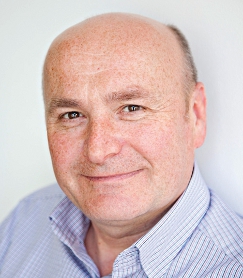How can industrial design kick start sluggish Western economies?
Answering this and some of the biggest questions facing innovators today are top names from the world of industrial design as Product Design and Innovation (PD + I) returns to London for a third year offering delegates two days of debate, education and networking.
The conference features renowned speakers both from the UK and further afield who will be providing an insight into the latest trends, developments, opinions and the future of product design, manufacture and sustainable innovation.
As well as panel debates and networking opportunities, new this year is the ‘Talking Innovation’ session, which will see speakers give five minute presentations in the innovation area.
“As traditional notions of product design stretch at the seams, this conference is proving an invaluable opportunity for the profession to regroup, step back and review emerging areas of practice,” says conference chairman Kevin McCullagh, director of strategic design firm Plan.
Day one
The conference kicks off on 15th May with the first session entitled ‘Internet of things: designing connected objects’. Dr Uday Phadke, chief executive of technology innovation specialist Cartezia takes the chair for this while keynote speakers include Jamian Cobbett, design lead at Nike Digital Sport and Clive Grinyer, director of customer experience at Cisco IBSG.
One of last year’s most engaging and controversial speakers James Woudhuysen, professor of forecasting and innovation at De Montfort University, returns to look at ‘Emerging industries: new fields for design’.
He is joined by Professor James Moultrie, head of the Design Management Group at Cambridge University. They will seek to unpick the intriguing question as to how design and designers can get involved in new and emerging industries to accelerate growth in the economy as a whole.
Day two
Day two will see designers exploring the future of transport and passenger experience in the ‘Wired transport: connected trains, planes and automobiles’ session where Paul Priestman, designer and co-founding director of international design consultancy Priestmangoode, will be leading the debate.

Paul Priestman,designer and cofounding director of Priestmangoode
One of the biggest transformations in transportation is the growing importance of infotainment, online connection and additional services.
Priestman believes Google’s driverless car project suggests the possibility of a new form of personal transport without personal ownership. “Once we can start to break the personal ownership of vehicles, I think it will allow cities to breathe again,” he comments.
Joining Priestman in this session as featured speaker is Anne Asensio, vp of design experience at Dassault Systèmes, who previously worked as executive director of design at General Motors where she was in charge of vehicle design at the company’s Michigan, Los Angeles and UK design studios.
Asensio began her career at Renault, where she was responsible for driving the design of small and mid size cars, such as the Megane range.
“Over the past 30 years the designer’s role has evolved and can no longer be likened to that of ‘stylist’ who focus specifically on the aesthetic of shapes,” she says. “The complexity of design projects, the fragmented and extended market demands, and the striving towards providing customers continuous seamless experience has meant that designers have had to shift towards a totally new ball game.”
In the last session of Day Two, Jeroen Raijmakers, global creative director healthcare at Philips Design, will be delivering the keynote for the ‘Healthcare Consumerisation’ session, which will be examining the role product design can play in the complete cycle of a person’s care: from disease prevention, screening and diagnosis, through to treatment, monitoring and health management.
He is joined by fellow speaker Matt Pattison, founder of Anatomy-HCD, and panelists Jim Dawton, partner at DesignIt, Craig Wightman, design director at product design consultancy Kinneir Dufort and Thomas Troch, innovation manager at InSites Consulting.
“Healthcare is in the middle of a re-invention. Consumer technologies and services are increasingly empowering consumers to become the masters of their own health,” observes Wightman, who recently led the successful Kinneir Dufort “Design Bugs Out” project with The Design Council and Department of Health, creating a new range of hospital furniture for Bristol Maid, designed to combat incidence of hospital acquired infections.
Join the debate
The conference, which is sponsored by Materialise and Dassault Systèmes, will offer a beneficial two days out of the office.
As Priestman says, “Few conferences offer the breadth of speakers that PD + I does. Innovation stems from looking at things in new and unexpected ways. At Priestmangoode, one of the ways we do this is by transferring our skills and knowledge across sectors, from product design and aviation to hospitality and healthcare. I believe that by encouraging discussions between designers across industries, the PD+I conference is helping drive innovation forward.”
Product Design + Innovation Conference 2013 from the 15-16 May
Default





